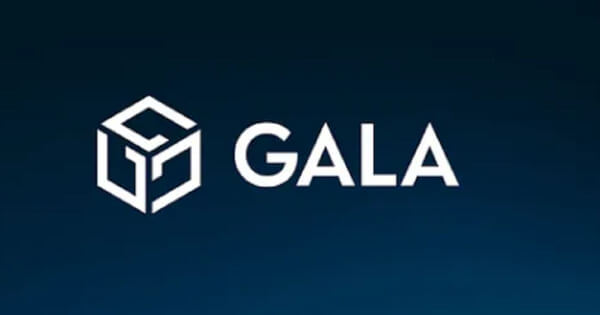
As stablecoins issuers were put under the pressure of Democratic witnesses, Senator Pat Toomey released his own set of regulatory principles.
On Dec. 14, the United States Senate Banking, Housing and Urban Affairs Committee held a hearing titled “Stablecoins: How Do They Work, How Are They Used, and What Are Their Risks?” The testimonies, both spoken and written, focused largely on the last two issues, as anxieties over Know Your Customer compliance and the U.S. dollar inflation threat dominated the discussion.
Held less than a week after the House of Representatives Financial Services Committee’s hearing on digital assets, which was generally perceived as “constructive”, the meeting held by the Banking Committee was expected to be tough. Senator Sherrod Brown, a Democrat from Ohio who chairs the Committee and had called the hearing, is infamous for his critical stance on the crypto industry, and the November report from President’s Working Group on Financial Markets (PWG) proved that stablecoins are indeed at the center of the lawmaker’s attention due to their structural proximity to fiat money.
Compliance anxiety
Senator Brown let loose with his opening statement, bringing to life a ghost of the Great Depression: “These tokens can crash, with crypto markets diving by almost 30% in one day. History tells us we should be concerned when any investment becomes so untethered from reality. Look at the 1929 stock market crash.”
Brown once again manifested his hawkish approach when he observed that even in the absence of joint action by both chambers of Congress, there is a range of regulators who are already sharpening their tools to preside over stablecoins — from the Securities and Exchange Commission to the Federal Reserve and the Treasury Department.
The barrage intensified with the testimony of Alexis Goldstein, director of financial policy at Open Markets Institute. The liberal think tank, according to some observers, has become influential by spurring the Democratic party’s drive to rein in tech goliaths such as Meta and Google.
Goldstein used the opportunity to fiercely attack decentralized finance projects — which she maintained are largely “not in compliance” with existing Know Your Customer, Anti-Money Laundering and Combatting the Financing of Terrorism standards — and to question stablecoins’ potential to become a widely adopted payments settlement tool:
A recent report from the World Economic Forum found that stablecoins have no benefit for financial inclusion, as they are subject to the same or higher barriers as pre-existing financial options, including the need for internet and for smartphones. [...] As someone who’s played around with sending them [stablecoins], both personally and sort of in my work, it often makes Western Union look cheap when you rack up all of the fees that you need.
Goldstein’s scathing sentiment was counterbalanced by Dante Disparte, chief strategy officer and head of global policy at Circle, who highlighted a number of digital asset use cases, including empowering women and minority entrepreneurs and delivering aid. Disparte called for lawmakers to adopt a “do no harm” approach to regulation:
I argue that we are winning this [digital currency] race because of the sum of free-market activity taking place inside the U.S. regulatory perimeter with digital currencies and blockchain-based financial services. The sum of these activities are advancing broad U.S. economic competitiveness and national security interests.
The Circle executive said that the stablecoin sector was still in the opening innings and that those who accuse it of failing in terms of financial inclusion wrongly presume that stablecoins have agency similar to that of the dollar. The argument resonated with Circle’s recent announcement that its stablecoin, USD Coin (USDC), will be supported on the Avalanche blockchain, with the goal to provide lower fees and faster smart contract settlement.
The question of issuance
Arguably the most technically nuanced part of the hearing had to do with the future legal classification of stablecoins. At this point, it was Senator Pat Toomey, a Republican from Pennsylvania, who spearheaded the opposition to the Democrat’s fearmongering by proposing that stablecoin issuance not be limited to insured depository institutions. This point appeared in Toomey’s set of principles released ahead of the hearing.
Earlier, the Democrat-led PWG had advocated for limiting stablecoin issuance to insured depository institutions. Toomey’s reaction to Brown’s opening statement was a crisp message: Any final decision on stablecoins “is a question that rests with Congress.”
The need to consider stablecoin issuance a matter of federal charter was laid out by Jai Massari, a partner at international law firm Davis Polk, in her written statement:
A new and well-designed federal charter could accommodate a business model premised on the issuance of stablecoins fully backed by short-term, liquid assets and the provision of related payments services. This charter could impose requirements for reserve asset composition while tailoring leverage ratios or risk-based capital requirements and other requirements to the nature of the business model.
According to Massari, having stablecoin issuers regulated similarly to Federal Deposit Insurance Corporation-insured banks would be “unworkable” and “unnecessary.” She added that the firms are already capable of limiting the risk of their stablecoin reserves and of “requiring the market value of those reserves to be no less than the par value of stablecoins outstanding.”
A quiet reaction
The aftermath of the hearing saw the speakers’ positions unshaken. Senator Brown shared a piece of his testimony on Twitter, calling the stablecoins a “mirror of the same broken [banking] system”:
Stablecoins and crypto markets aren’t actually an alternative to our banking system.
— Sherrod Brown (@SenSherrodBrown) December 14, 2021
They’re a mirror of the same broken system––with even less accountability, and no rules at all. pic.twitter.com/EvWwuFh886
Senator Toomey once again voiced his excitement for the new technology and his determination to work closely on its friendly regulation:
Stablecoins are an exciting new technology that create opportunities for faster payments, expanded access to the payment system, programmability, and more.
— Senator Pat Toomey (@SenToomey) December 14, 2021
I hope my colleagues will join me in working to create a sensible regulatory regime that allows this innovation to thrive. pic.twitter.com/DRUvKvErgx
Key participants of the previous week’s more constructive House hearing have eloquently ignored the Banking Committee meetup on social media. Crypto Twitter, too, has largely remained silent on the matter.
What’s next?
While the hard work of framing new regulatory standards can take years, with stablecoin regulation there are clear signs of rapid progress going on. Not all of the developments, however, look favorable.
The report by the PWG called for the introduction of comprehensive oversight as soon as possible. Consistent with the opinion of Treasury Secretary Janet Yellen, the group urged Congress to require stablecoin issuers be insured depository institutions.
It took a little more than a month for Republicans to draft their counterplan and defend it at the Senate hearing. The obvious problem for those who want stablecoins to retain their non-bank identity is that at the moment, Senator Toomey’s set of principles is a collection of bullet points that could fit on a single sheet of paper, while the PWG report contains 26 pages of dense policy proposals.
Perhaps an even bigger issue is that the approach articulated by the PWG is backed — and likely inspired — by those within the incumbent presidential administration. If Republicans are serious about taking the non-banking side of the stablecoin divide and suggesting an alternative regulatory approach to this asset class, they had better consolidate their views in a similarly tight manner.

You can get bonuses upto $100 FREE BONUS when you:
💰 Install these recommended apps:
💲 SocialGood - 100% Crypto Back on Everyday Shopping
💲 xPortal - The DeFi For The Next Billion
💲 CryptoTab Browser - Lightweight, fast, and ready to mine!
💰 Register on these recommended exchanges:
🟡 Binance🟡 Bitfinex🟡 Bitmart🟡 Bittrex🟡 Bitget
🟡 CoinEx🟡 Crypto.com🟡 Gate.io🟡 Huobi🟡 Kucoin.

















Comments